Here we go again, nervous system. I was browsing through the net and found a quiz that challenge me to guess the cranial nerves of the brain. Surprisingly, I flunked :( . It was frustrating but it gave me a lesson not to give and take easily while reading.
***************************************************************
The Cranial nerves

The cranial nerves are composed of twelve pairs of nerves that emanate from the nervous tissue of the brain. In order reach their targets they must ultimately exit/enter the cranium through openings in the skull. Hence, their name is derived from their association with the cranium.
The function of the cranial nerves is for the most part similar to the spinal nerves, the nerves that are associated with the spinal cord. The motor components of the cranial nerves are derived from cells that are located in the brain. These cells send their axons (bundles of axons outside the brain = a nerve) out of the cranium where they will ultimately control muscle (e.g., eye movements) , glandular tissue (e.g., salivary glands) or specialized muscle (e.g., heart or stomach). The sensory components of cranial nerves originate from collections of cells that are located outside the brain. These collections of nerve cells bodies are called sensory ganglia. They are essentially the same functionally and anatomically as the dorsal root ganglia which are associated with the spinal cord.
In general, sensory ganglia of the cranial nerves send out a branch that divides into two branches: a branch that enters the brain and one that is connected to a sensory organ. Examples of sensory organs are pressure or pain sensors in the skin and more specialized ones such as taste receptors of the tongue. Electrical impulses are transmitted from the sensory organ through the ganglia and into the brain via the sensory branch that enter the brain. There are two exceptions to this rule that should be noted when the special senses of smell and vision are discussed. In summary, the motor components of cranial nerves transmit nerve impulses from the brain to target tissue outside of the brain. Sensory components transmit nerve impulses from sensory organs to the brain.
i- Olfactory nerve

The olfactory nerve is actually a collection of sensory nerve rootlets that extend down from the olfactory bulb and pass through the many openings of the cribriform plate in the ethmoid bone. These specialized sensory receptive parts of the olfactory nerve are then located in the olfactory mucosa of the upper parts of the nasal cavity. During breathing air molecules attach to the olfactory mucosa and stimulate the olfactory receptors of cranial nerve I and electrical activity is transduced into the olfactory bulb. Olfactory bulb cells then transmit electrical activity to other parts of the central nervous system via the olfactory tract.
ii-Optic nerve
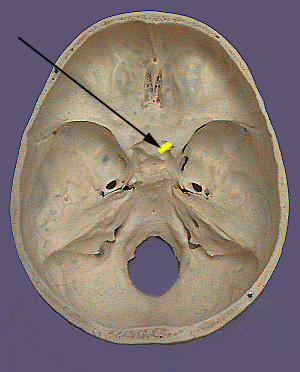
The optic nerve originates from the bipolar cells of the retina which are connected to the specialized receptors in the retina (rod and cone cells). Light strikes the rod and cone cells and electrical impulses are transduced and transmitted to the bipolar cells. The bipolar cells in turn transmit electrical activity to the central nervous system through the optic nerve. The optic nerve exits the back of the eye in the orbit and enters the optic canal and exits into the cranium. It enters the central nervous system at the optic chiasm (crossing) where the nerve fibers become the optic tract just prior to entering the brain.
iii- Oculomotor nerve

The oculomotor nerve originates from motor neurons in the oculomotor (somatomotor) and Edinger-Westphal (visceral motor) nuclei in the brainstem. Nerve cell bodies in this region give rise to axons that exit the ventral surface of the brainstem as the oculomotor nerve.
iv- Trochlear nerve
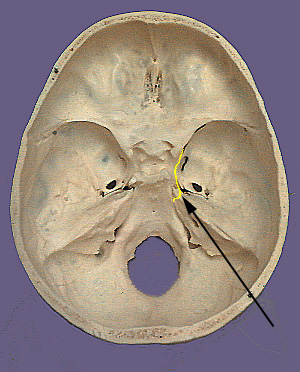
The trochlear nerve is purely a motor nerve and is the only cranial nerve to exit the brain dorsally. The trochlear nerve supplies one muscle: the superior oblique. The cell bodies that originate the fourth cranial nerve are located in ventral part of the brainstem in the trochlear nucleus. The trochlear nucleus gives rise to nerves that cross (decussate) to the other side of the brainstem just prior to exiting the brainstem. Thus, each superior oblique muscle is supplied by nerve fibers from the trochlear nucleus of the opposite side.
v-Trigeminal nerve

The trigeminal nerve as the name indicates is composed of three large branches. They are the ophthalmic (V1, sensory), maxillary (V2, sensory) and mandibular (V3, motor and sensory) branches.
It is distributed to the muscles of mastication, the mylohyoid muscle and the anterior belly of the digastric. The mandibular nerve also innervates the tensor veli palatini and tensor tympani muscles. The three sensory branches of the trigeminal nerve emanate from the ganglia to form the three branches of the trigeminal nerve. vi- Abducent
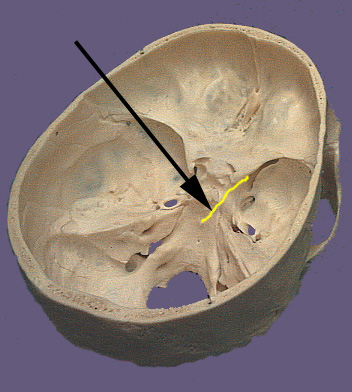
The abducens nerve originates from neuronal cell bodies located in the ventral pons. These cells give rise to axons that course ventrally and exit the brain at the junction of the pons and the pyramid of the medulla. The abducens nerve passes through the common tendonous ring of the four rectus muscles and then enters the deep surface of the lateral rectus muscle. The function of the abducens nerve is to contract the lateral rectus which results in abduction of the eye.
vii- Facial nerve
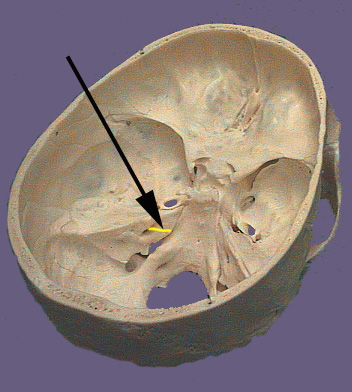
The facial nerve is mixed nerve containing both sensory and motor components.
The facial nerve has four components with distinct functions:
| Brancial motor
(special visceral efferent) | Supplies the muscles of facial expression; posterior belly of digastric muscle; stylohyoid, and stapedius. |
| Visceral motor
(general visceral efferent) | Parasympathetic innervation of the lcrimal, submandibular, and sublingual glands, as well as mucous membranes of nasopharynx, hard and soft palate. |
| Special sensory
(special afferent) | Taste sensation from the anterior 2/3 of tongue; hard and soft palates. |
| (general somatic afferent) | General sensation from the skin of the concha of the auricle and from a small area behind the ear. |
**Branchial motor fibers constitute the largest portion of the facial nerve.
viii- Vestibulocochlear Nerve
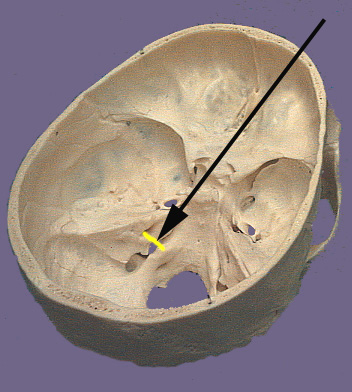
The vestibulocochlear nerve is a sensory nerve that conducts two special senses: hearing (audition) and balance (vestibular). The receptor cells for these special senses are located in the membranous labyrinth which is embedded in the petrous part of the temporal bone. There are two specialized organs in the bony labyrinth, the cochlea and the vestibular apparatus. The cochlear duct is the organ that is connected to the three bony ossicles which transduce sound waves into fluid movement in the cochlea. This ultimately causes movement of hair cells which activate the auditory part of the vestibulocochlear nerve. The vestibular apparatus is the organ that senses head position changes relative to gravity. Movement causes fluid vibration resulting in hair cell displacement that activates the vestibular part of the eighth nerve.
ix- Glossopharyngeal nerve
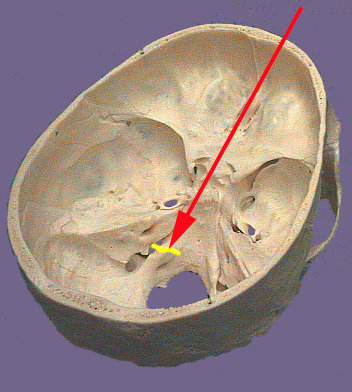
The glossopharyngeal nerve consists of five components with distinct functions:
| Brancial motor
(special visceral efferent) | Supplies the stylopharyngeus muscle. |
| Visceral motor
(general visceral efferent) | Parasympathetic innervation of the smooth muscle and glands of the pharynx, larynx, and viscera of the thorax and abdomen. |
| Visceral sensory
(general visceral afferent) | Carries visceral sensory information from the carotid sinus and body. |
| General sensory
(general somatic afferent) | Provides general sensory information from the skin of the external ear, internal surface of the tympanic membrane, upper pharynx, and the posterior one-third of the tongue. |
| Special sensory
(special afferent) | Provides taste sensation from the posterior one-third of the tongue. |
x- Vagus nerve
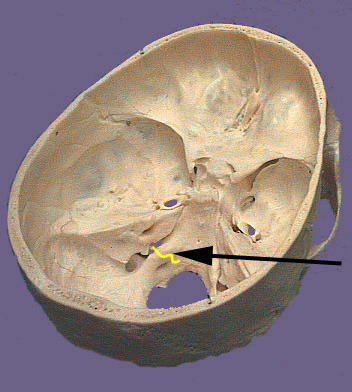
The vagus nerve is the longest of the cranial nerve.
The vagus nerve consists of five components with distinct functions:

| Brancial motor
(special visceral efferent) | Supplies the voluntary muscles of the pharynx and most of the larynx, as well as one extrinsic muscle of the tongue. |
| Visceral motor
(general visceral efferent) | Parasympathetic innervation of the smooth muscle and glands of the pharynx, larynx, and viscera of the thorax and abdomen. |
| Visceral sensory
(general visceral afferent) | Provides visceral sensory information from the larynx, esophagus, trachea, and abdominal and thoracic viscera, as well as the stretch receptors of the aortic arch and chemoreceptors of the aortic bodies . |
| General sensory
(general somatic afferent) | Provides general sensory information from the skin of the back of the ear and external auditory meatus, parts of the external surface of the tympanic membrane, and the pharynx. |
| Special sensory
(special afferent) | A very minor component of CN X. Provides taste sensation from the epiglottic region. This component will not be discussed further. |
xi- Accessory nerve
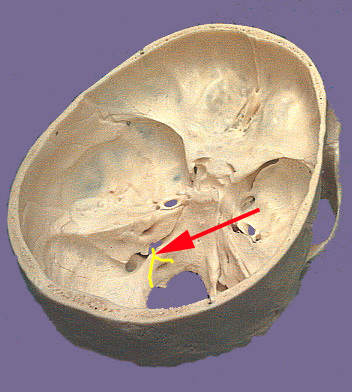
The spinal accessory nerve originates from neuronal cell bodies located in the cervical spinal cord and caudal medulla. Most are located in the spinal cord and ascend through the foramen magnum and exit the cranium through the jugular foramen. They are branchiomotor in function and innervate the sternocleidomastoid and trapezius muscles in the neck and back.
xii- Glossopharyngeal nerve
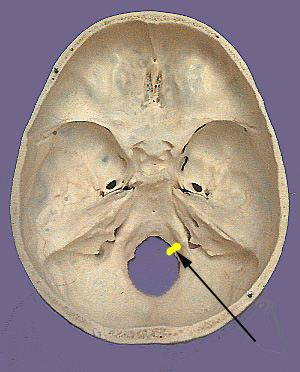
The hypoglossal nerve as the name indicates can be found below the tongue. It is a somatomotor nerve that innervates all the intrinsic and all but one of the extrinsic muscles of the tongue. The neuronal cell bodies that originate the hypoglossal nerve are found in the dorsal medulla of the brain stem in the hypoglossal nucleus. This nucleus gives rise to axons that exit as rootlets that emerge in the ventrolateral sulcus of the medulla between the olive and pyramid. The rootlets come together to form the hypoglossal nerve and exit the cranium via the hypoglossal canal.
The nerve passes laterally and inferiorly between the internal carotid artery and internal jugular vein. The twelfth cranial nerve travels lateral to the bifurcation of the common carotid and loops anteriorly above the greater horn of the hyoid bone to run on the lateral surface of the hyoglossus muscle. It then travels above the edge of the mylohyoid muscle. The hypoglossal nerve then separates into branches that supply the intrinsic muscles and three of the four extrinsic muscles of the tongue.
Summary of Cranial nerves
Ps: If you ready, then answer the quiz!
Sources: The cranial nerves, loyola univ medical education network, cranial nerves, Yale Univ school of medicine




















0 comments:
Post a Comment